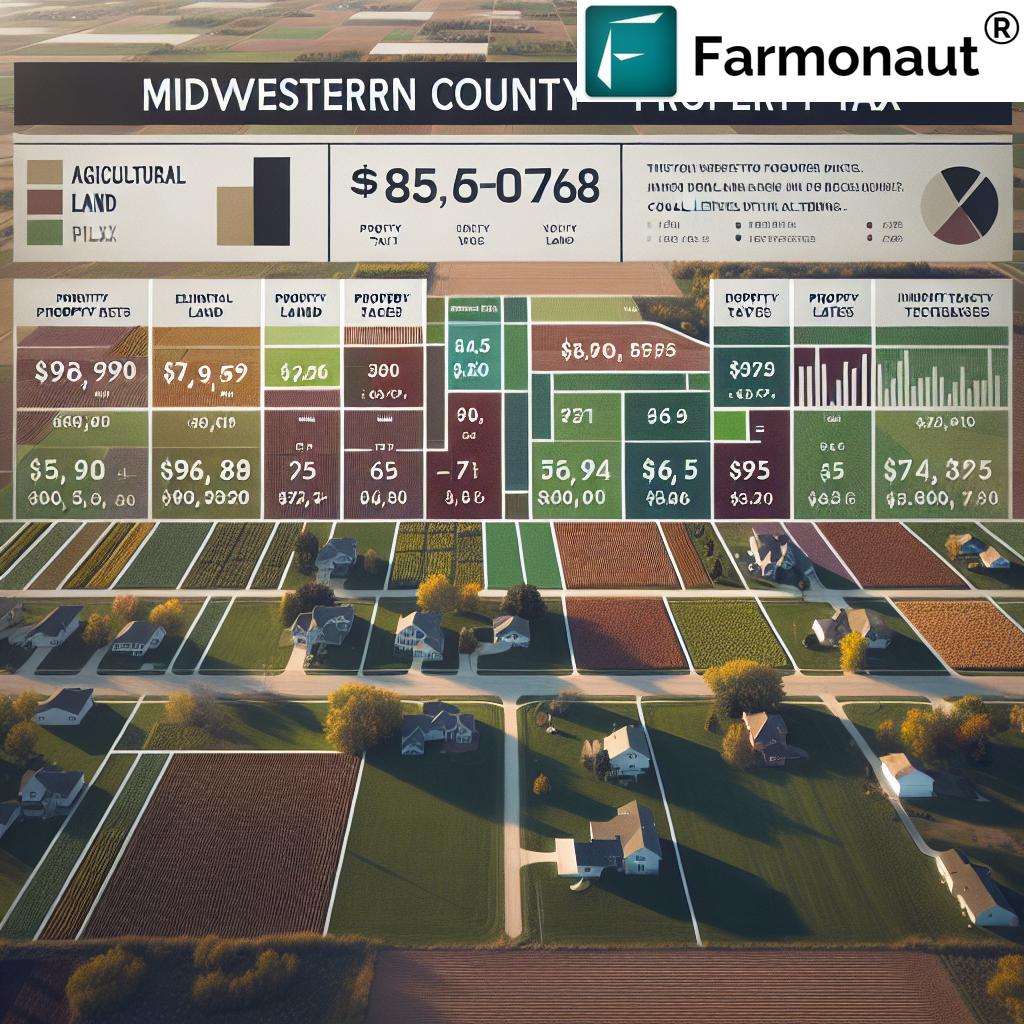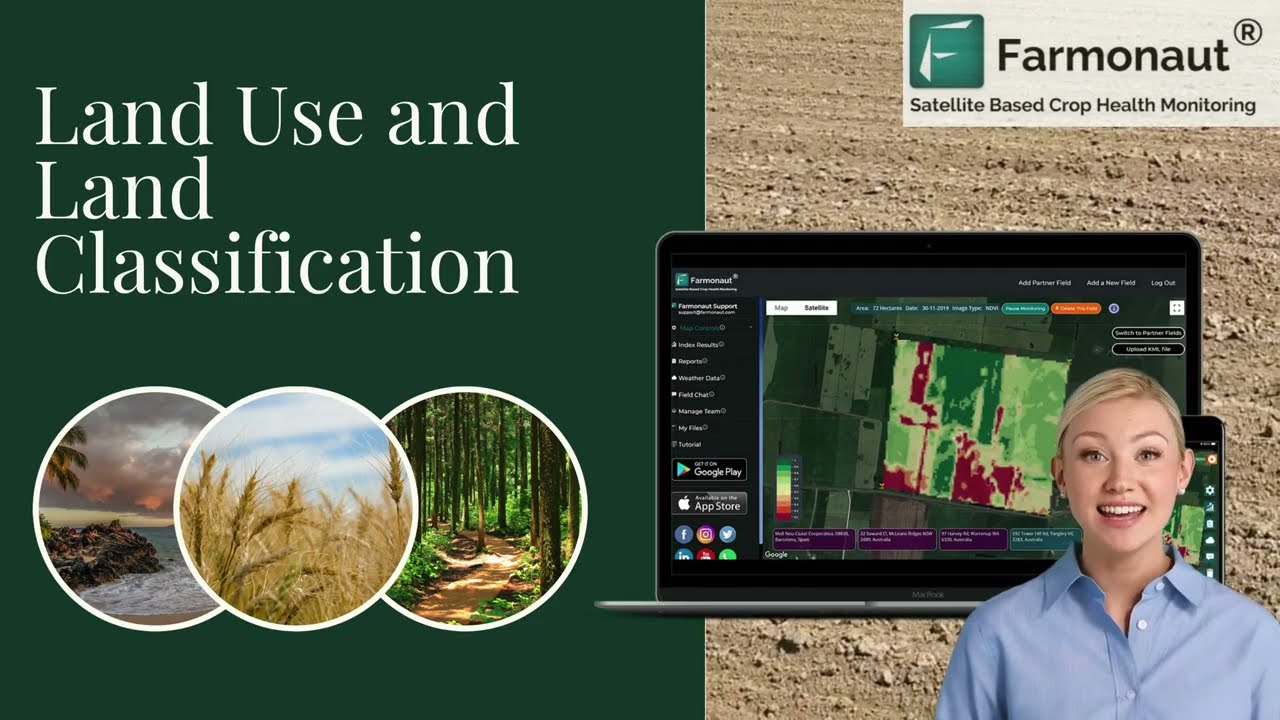Linn County Property Tax: 2026 Levy Rate Drops, Budget Rises
Meta Description: Linn County property tax changes for 2026: Explore county levy rate decrease, fiscal year 2026 county budget increase, and their widespread impact on residential and agricultural owners. Understand what the new budget means for assessed property value, tax calculations, and future fiscal trends in Cedar Rapids and the surrounding area.
“Linn County’s 2026 property tax levy rate drops by 4%, while the overall county budget increases by 7%.”
“Residential and agricultural owners in Linn County will see tax rate changes impacting over 50,000 properties in 2026.”
Table of Contents
- Overview: Linn County Property Tax 2026
- Budget Approval & Public Involvement
- County Levy Rate Decrease for Fiscal Year 2026
- Residential Property Tax Increase: Calculation & Impact
- Agricultural Land Tax Rates & Trends
- Assessed Property Value in Linn County
- County Budget Revenue and Expenditures
- Property Tax Allocation and Distribution
- Farmonaut: Advancing Agricultural Land Management with Technology
- Linn County Property Tax and Budget Change Overview
- Frequently Asked Questions
Overview: Linn County Property Tax Changes for 2026
Linn County, centered in the heart of Cedar Rapids and stretching across urban and rural Iowa, will experience notable changes in property tax structures beginning fiscal year 2026. This year’s budgetary process has sparked considerable conversation among residential and agricultural land owners regarding tax rates, assessed property value, and the resources it provides. Following a unanimous vote by the Linn County Board of Supervisors, the county levy rate will decrease, yet the county budget for the upcoming fiscal year will rise. Understanding the intricate dynamics between property tax allocation, levy rate decrease, and budget increases is essential for every property owner—rural and urban alike.
In this comprehensive analysis, we will dissect the recently adopted fiscal year 2026 county budget, highlight how levy rates are calculated, and explain what these changes mean for residential homeowners, agricultural property owners, and commercial interests in our community. We will pay special attention to practical issues such as homeowner property tax calculation, state-mandated rollback rates, and the role of local-option sales tax in Linn County.
Budget Approval & Public Involvement in Linn County
Each year, county officials, department heads, elected board members of supervisors, and concerned residents of Linn County engage in an open dialogue to shape the next fiscal year’s priorities. The fiscal year 2026 county budget is the result of meetings that began in November, followed by transparent hearings designed to ensure community needs align with available resources.
- Community Collaboration: The 2026 budget proposal was drafted with input from both public officials and the general public, making the budget process accessible and accountable.
- Transparency: All budget highlights, charts, and impact summaries are available on the official Linn County website, with a full budget book scheduled for release in the summer of 2025.
- Public Meetings: Residents, including rural and urban property owners, were encouraged to participate and submit feedback—demonstrating the importance of public voice in determining how millions of county dollars are allocated yearly.
According to Board Chair Brandy Z. Meisheid, this collaborative process results in a county budget “that’s not only balanced, but responsible,” recognizing both the needs and constraints of all Linn County taxpayers.
County Levy Rate Decrease and the Fiscal Year 2026 Budget
The 2026 Linn County Budget introduces a modest but significant drop in the countywide levy rate—declining from $6.07 to $6.06 per $1,000 assessed value. Rural residents will experience an additional decrease in the rural levy rate, thanks to a local-option sales tax allocation benefiting rural communities.
- Countywide Levy Rate: Drops by $0.01 (from $6.07 to $6.06), aligning with a consistent effort to keep tax burdens as manageable as possible for property owners.
- Rural Rate: Falls from $2.63 to $2.60 in fiscal year 2026, assisted by a $1 reduction for rural residents approved under the local-option sales tax program.
- Budget Totals: Despite rate reductions, the 2026 county budget rises to $166.2 million, up by 5.8% from the previous fiscal year.
This adjustment reflects Linn County’s balancing act: maintaining infrastructure and public services, funding new county initiatives, and addressing wage and material costs, all while controlling the direct impact of taxes on residential and agricultural land owners.
Residential Property Tax Increase: Calculation & Impact
Although levy rates decrease, a crucial factor for homeowners in Linn County is the statewide rollback rate. This determines what portion of a property’s assessed value is actually taxable, meaning that even as the county reduces its rates, the actual tax paid may rise due to higher assessed property values and changing rollbacks.
- Residential Rollback: For fiscal year 2026, the residential rollback rate increases to 47.4% (up from 46.3% in 2025).
- Homeowner Property Tax Calculation Example: A home assessed at $200,000 will see a county tax bill increase from $562.57 to $574.49—**not accounting for other taxing authorities**.
- Why the Increase? The rise is attributed to state policies dictating which percentage of home value is taxed, not directly to county policies. As witnessed, a reduction in the levy rate does not always yield lower tax bills.
Budget Manager Sara Bearrows underscores this reality: increased assessed values and rollback rates are determined by statewide programs controlled by the Department of Revenue. The result is a widespread residential property tax increase for many homeowners—especially when property values rise.
Agricultural Land Tax Rates and Trends in Linn County
Farmers and agricultural property owners have also seen an uptick in tax obligations due to similar upward shifts in the agricultural land rollback rate. The commercial property rollback remained unchanged for 2026. Here’s what agricultural landowners need to know:
- Rollback Rate: The agricultural rollback has increased for fiscal year 2026, meaning a higher percentage of the assessed agricultural land value is subject to taxation.
- Impact Magnitude: Over 50,000 properties across Lynn County—many rural and agricultural—are directly affected by these changes.
- Allocation of Revenue: Agricultural tax increases are channeled toward infrastructure, conservation, and property tax relief measures.
- Program Support: Local-option sales tax revenue supports $3.8 million for road construction, $1.9 million for conservation, and $1.9 million for rural property tax relief in Linn County.
In this environment, maximizing land productivity and monitoring resource use are top priorities for agricultural professionals. Innovative technology, such as the satellite-based solutions offered by Farmonaut, can offer invaluable assistance—delivering actionable data on crop health, soil moisture, and land use, thus improving yield and sustainability amid rising tax burdens.
Assessed Property Value in Linn County: Implications for Owners
The “assessed property value linn county” is a pivotal factor in determining annual tax responsibilities. Assessment values, set in accordance with state and county guidelines, represent the official valuation for all property—residential, commercial, and agricultural—within county borders.
- Assessment Frequency: Typically, the county assessor updates property assessments annually, using standards mandated at the state level.
- Impact of Valuation Increases: Rising market values in Cedar Rapids and rural townships often result in higher assessments, translating to increased taxable value for both homeowners and farmers.
- Taxed Value Calculation: The final taxable value is determined by multiplying the assessed value by the applicable rollback rate and the county levy rate.
For all property owners, from city dwellers to rural farmers, understanding how their property is assessed and taxed is essential to effective financial planning. The county offers an online tool where residents can enter their address and see the breakdown of their property taxes by jurisdiction, helping them better track allocation and plan accordingly.
County Budget Revenue and Expenditures for Fiscal Year 2026
The approved Linn County budget signals a robust investment in regional development, essential services, and employee compensation. Here’s a breakdown of the most significant points:
- Total Expenditure Budget: $166.2 million for 2026 (up $9.1 million from 2025).
- Revenue Budget: Jumps to $169.7 million, an annual bump of 7.6% attributed to higher investment earnings, expanded treasurer’s fees, increased permits, and enhanced local-option sales tax revenue.
- Property Tax Revenue: $86.6 million anticipated to be raised from property tax levies—a 3.9% increase over the previous year.
- Salaries, Wages & Costs: ~4% wage increase for all county employees, and slightly higher for the sheriff; material and operational costs adjusted in line with justified inflation and contractual obligations.
- Offers & Innovations: $603,922 allocated for department-requested “offers” covering new staff and strategic initiatives—from software contracts to grants aimed at enhancing service provision.
Maintaining a 25% fund balance in the general fund—a critical cash flow and emergency reserve—positions the county to uphold its AAA bond rating, safeguarding both short-term stability and long-term fiscal strength.
Property Tax Allocation and Distribution in Linn County
Property taxes in Linn County are distributed to a range of taxing authorities—county government, cities, school districts, and specialized agencies, each supporting essential community services. For 2026:
- Linn County share: About 16% for city residents; 33% for rural owners
- Rest of Tax: Distributed among other taxing entities for schools, city services, and other special districts
- Online Tool: Owners can use the Linn County property tax collection and distribution website to see precise amounts and percentages going to each jurisdiction.
This property tax allocation plays an essential role in funding everything from law enforcement to conservation efforts. Rural residents benefit from the local-option sales tax linn county allocation, which directly supports both infrastructure and tax relief programs. Wise tracking and responsible management of allocations help the county fulfill its commitment to citizens’ priorities.
“Residential and agricultural owners in Linn County will see tax rate changes impacting over 50,000 properties in 2026.”
Farmonaut: Advanced Technology for Agricultural Land Owners in Linn County
Amidst evolving agricultural land tax rates and increasing fiscal pressures, the need for precision resource management is clear. This is especially true for agricultural owners affected by assessment and rollback changes in Linn County. As part of our commitment to supporting sustainable and profitable agriculture in this region and beyond, we introduce you to Farmonaut—a leader in satellite-powered farm management solutions for agricultural landowners worldwide.
How Farmonaut Can Help Linn County’s Agricultural Owners
- Satellite Crop Health Monitoring: Access real-time insights on crop growth and land use via Farmonaut’s app and web dashboard. Make timely decisions about irrigation, fertilizer, and pest management—crucial when every acre’s productivity impacts your bottom line.
- AI-Based Advisory: Jeevn AI system delivers actionable guidance tailored to your specific parcel, microclimate, and crop, unlocking new efficiencies for Linn County fields.
- Traceability & Blockchain: For those exporting produce or supplying local supply chains, blockchain-based traceability enforces transparency and authenticity, building trust and opening potential new markets.
- Fleet & Resource Management: Minimize operating costs by managing equipment fleets and logistics with Farmonaut’s resource management platform. Reduce waste and maximize uptime—vital as costs and wages rise.
- Carbon Footprinting: Track emissions and sustainability targets with Farmonaut’s carbon footprinting tool, a valuable feature for those complying with environmental requirements or pursuing new energy credits.
- Crop Loan & Insurance: Financial institutions in agricultural areas can benefit from satellite-based verification for crop loans and insurance policies.
Farmonaut is not a marketplace, manufacturer, or regulatory body. It stands as an innovative provider of digital agri-solutions, ensuring farming in Linn County is both sustainable and profitable in the face of changing economic and fiscal realities.
Integrate Data Effortlessly:
Access Farmonaut’s satellite and weather data via our flexible API platform, allowing you to enrich your software, cooperative, or research tools with real-time agricultural data.
Developer documentation is available for seamless integration and rapid prototyping.
Linn County Property Tax and Budget Change Overview
| Fiscal Year | Estimated County Levy Rate (per $1,000 value) |
% Change in Levy Rate | Total County Budget (Million USD) |
% Change in Budget | Estimated Residential Property Tax (Median Value) | Estimated Agricultural Property Tax (per acre/typical parcel) |
|---|---|---|---|---|---|---|
| 2025 | $6.07 | – | $157.1 | – | $562.57 (per $200k assessed) | ~$XX (est.) |
| 2026 | $6.06 | -0.16% | $166.2 | +5.8% | $574.49 (per $200k assessed) | ~$YY (est.) |
Note: Agricultural tax per parcel/acre varies based on assessed value and rollback; contact the county for parcel-specific figures.
Frequently Asked Questions (FAQ) — Linn County Property Tax, Budget, and Technology
Q1. Why is my property tax increasing even if the county levy rate is decreasing?
A1: The county levy rate is only part of your tax calculation. When the statewide rollback rate increases, a larger portion of your property’s assessed value is taxed. Even with a lower county levy rate, your actual tax can go up if your assessed value or the rollback increases.
Q2. What is the county’s property tax allocation for rural owners?
A2: For rural residents, up to 33% of their property tax bill goes to the county government. The rest is split among school districts, townships, and other taxing jurisdictions. The rural levy rate also reflects a $1 reduction thanks to the local-option sales tax allocation.
Q3. How are agricultural land rollback rates set in Linn County?
A3: Agricultural land rollbacks are determined by the Iowa Department of Revenue. The county applies this rate to the assessed value to determine what portion is taxed each fiscal year. The 2026 budget recognizes an increase in the ag rollback.
Q4. How does Farmonaut support Linn County’s farmers dealing with these changes?
A4: Farmonaut offers satellite-based monitoring, resource tracking, AI-driven advisory, and blockchain traceability for farm management—all accessible via web, Android, iOS, and API apps. These tools help maximize farm productivity, manage resources efficiently, and improve sustainability, providing an edge in times of rising assessment and input costs.
Q5. Where can I view the breakdown of my full property tax bill?
A5: Visit the Linn County property tax website, input your address, and review the current allocations by tax jurisdiction. The tool provides both the percentage and dollar breakdown.
Q6. What happens if the county budget keeps increasing?
A6: Budget increases can lead to enhanced services, improved infrastructure, better employee compensation, and more community initiatives. However, they may also raise the pressure for higher property tax revenues, especially if assessed values and cost-of-service needs expand at the same time.
Conclusion: Navigating Linn County’s Property Taxes with Insight and Innovation
The 2026 fiscal year brings both a county levy rate decrease and a budget increase for Linn County, Iowa. While the county’s supervisors remain committed to fiscal responsibility, state-mandated changes in rollback rates assure that most homeowners and agricultural landowners will see a modest increase in their Linn County property tax bills. Staying informed about budget changes, understanding the nuanced homeowner property tax calculation, and tracking property tax allocation by taxing authority is essential for planning ahead.
For those in agriculture, leveraging innovation—such as Farmonaut’s satellite-based solutions—offers a practical strategy to manage increasing costs and comply with sustainability goals, regardless of fiscal trends in local or statewide taxes. The combination of sound financial stewardship by county officials and accessible technology helps Linn County remain resilient, productive, and future-ready.
To keep up with ongoing changes and to explore the latest digital tools for your land, farms, or agri-business, visit our online resources, subscribe for updates, or check out the Farmonaut web and mobile applications today.




















